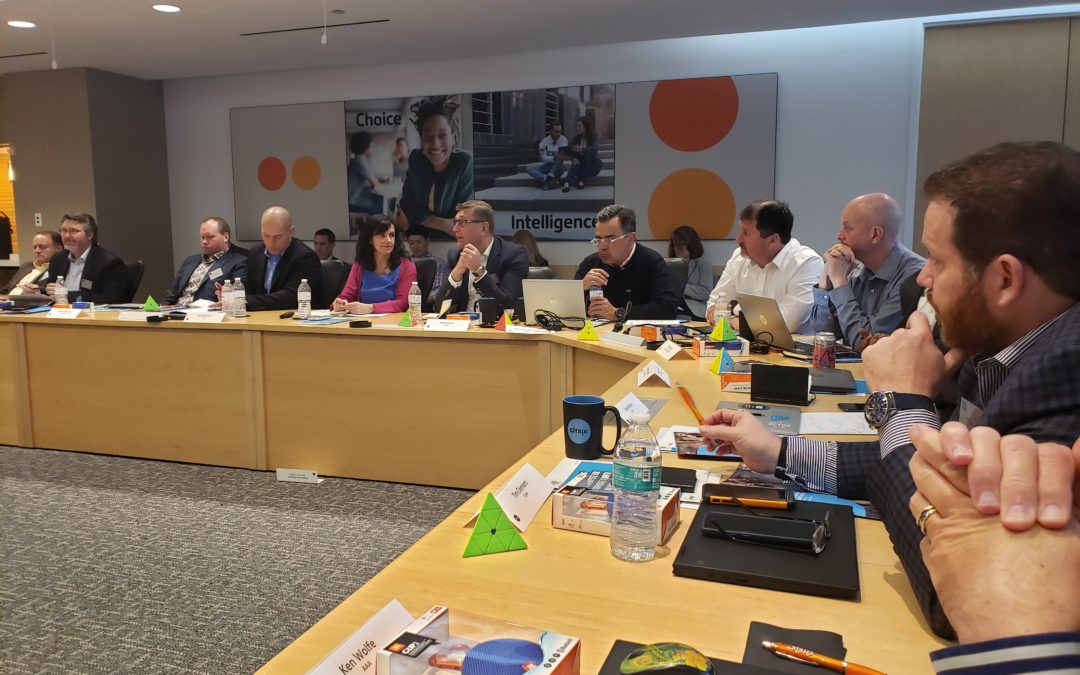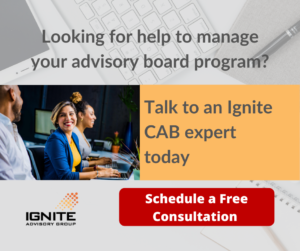You’ve even identified an employee from your company to facilitate the meeting, as he/she is a senior professional, understands your industry and customers, has a great personality and has “done this before.”
Unfortunately, here is where all your hard work invested in your CAB program so far may go south.
In engaging with client companies big and small for well over a decade, we have witnessed, and have had many prospects come to us with CAB program challenges attributed to ineffective meeting facilitation. It’s not anyone’s fault — despite the enthusiasm and good intentions of your in-house facilitator, they likely, simply don’t have the understanding, skill or the neutrality needed to manage and deliver an optimal CAB meeting.
As such, here are the top 5 reasons to hire a third-party facilitator for your next CAB meeting:
- Deep experience: Professional CAB meeting facilitators possess many years (often decades) of experience managing CAB meetings for numerous industries and companies. As such, they’ve learned the many pitfalls and keys to meeting success, understand the steps needed to prepare for strong meetings, know how to meet and exceed meeting goals and objectives, and deliver the best experience possible for all participants. In-house facilitators usually possess a thin understanding of these concepts, and thus their meetings often “skim the surface,” miss more material engagement opportunities or worse, let their meetings get well off-track.
- Program neutrality: Experienced CAB facilitators are able to recognize and manage all participants and personalities within a meeting — your customers and your own executive management. Due to their meeting neutrality, they make very good meeting “referees,” keeping the meeting agenda on-track, adhering to all timelines, managing boisterous participants and getting quiet members to participate, and ensuring session goals are delivered. In-house facilitators are burdened with the inability to manage their own executives — can you imagine having to redirect your own boss or (shudder) CEO in order to keep the agenda on-track? Thus, they usually shy away from such necessary interventions.
- Member recognition: Your CAB members will observe and appreciate your investment in a professional facilitator to optimize their meeting experience. After all, they are investing their time from their busy schedules to contribute to your CAB program and will appreciate your company’s dedication to ensuring their time is well spent. Using an in-house facilitator skews the meeting to be too focused on the host company, and may bring with it some history or baggage from previous customer engagements from that person’s normal role that may color the proceedings in a negative way.
- Session design and tactics: Professional CAB facilitators have experience creating, managing and delivering innovative and engaging agenda sessions that get attendees moving to uncover customer insights in unique and even fun ways. They are trained and skilled at selecting the best session design and CAB meeting engagement tactics for each session, which universally lead to positive praise by members and high post-meeting survey scores. In-house meeting facilitators are usually unaware of such tactics, and rely on one-way PowerPoint slides that lead to bored and disinterested participants.
- Maximized success: Experienced CAB facilitators will ensure your meeting is set up for maximum success and that meeting objectives are met or even exceeded. Your customers will be pleased that their voices were heard, that their insights and suggestions were uncovered and captured, that they learned much from their industry colleagues and had an interesting and engaging meeting experience. As such, they will eagerly attend your forthcoming meetings, actively participate in additional case studies, testimonials and video interviews, and purchase your company’s new solutions (often that they helped guide). In-house facilitators usually deliver a less engaging experience and, once the meeting ends, go back to playing catch-up on their busy “day jobs.”
Companies should invest the necessary time, resources and budget to make their CAB programs a success. Leveraging well-meaning but inexperienced employees as their CAB meeting facilitators usually leads to a sub-optimal experience — or worse — for their own executive participants and, especially, their best customers. Investing in a skilled, experienced CAB facilitator will ensure the best possible experience and outcome for all participants for years to come.

